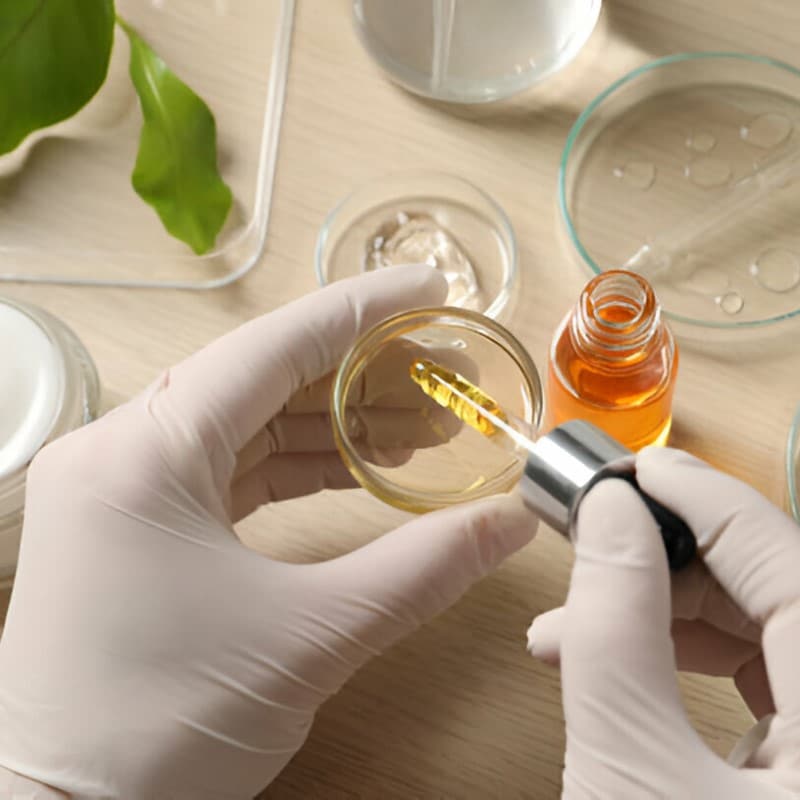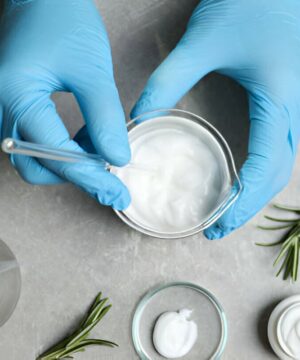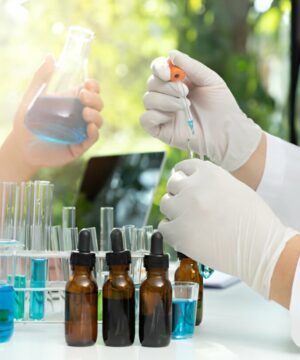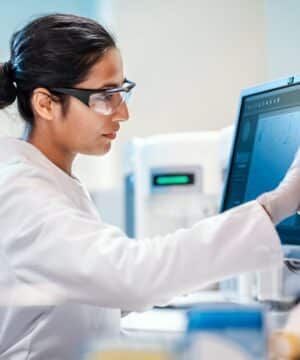Cosmetics quality and safety plays a major role in cosmetics production. This includes microbiological laboratory testing of products. When these tests are performed, they examine whether a product remains free of harmful microorganisms and whether it remains good throughout its shelf life.
What exactly does a microbiology laboratory test involve?
A microbiological analysis of a product is a test for the presence of pathogenic microorganisms, fungi and yeasts. The main concern is to prove that the product is microbiologically stable and harmless. This is especially relevant for products applied to the skin or hair, as contamination can cause health problems.
Importance of microbiological laboratory testing
Microbiology is the study of life invisible to the naked eye, with the most common life forms being bacteria and viruses. Microorganisms are practically everywhere and this is how a product can become contaminated. Proper manufacturing practices are therefore important, this is called Good Manufacturing Practices.
Various types of microbiological tests
Depending on the product and the purposes of use, different microbiological tests can be performed. The most common are:
1. Microbiological assessment
This test aims to identify and measure microorganisms in the product by measuring, for example, the whole number of aerobic bacteria and yeasts and fungi (TAMC) and (TYMC). Specific diseases such as Staphylococcus aureus, Escherichia coli, Candida albicans and Pseudomonas aeruginosa are also checked.
2. Challenge test
It involves testing the presence of bactericidal agents in a given product. Microorganisms are intentionally added and after application of the product, the antimicrobial activity of the product is determined. This test mimics the conditions to which a product would be exposed during its intended use, where it would become contaminated.
3. Water activity test
This test indicates how much water is available in a given product for microorganisms to grow. Products with high water activity are more likely to become products containing microorganisms. The application is ideal in creams and gels.
How long will the test take?
Duration of the test: 7 days
Estimated report delivery time: 15-20 days
How do I get the results?
You will receive an email when the test results are ready.
How do you prepare your sample?
Required amount of sample: 100 g/ml
The amount of sample to be prepared for this test is 100 g/ml. Send the samples in the original packaging of your products as they are offered for sale. If this is not possible, send your bulk products immediately after production by packing them in a tightly sealed and uncontaminated container.
After purchasing this test, we will send you all the instructions you need and where to send the samples.
What are the steps of the microbiological test?
Performing a microbiological examination in the laboratory involves the following steps:
1. Send samples
Send the sample of your product so we can start the laboratory test. After purchasing this test, we will send you all the instructions you need.
2. Sampling
The first stage consists of taking product samples. These samples are taken using aseptic methods to prevent cross-contamination. The samples used are from the product batch you supply to us.
3. Sample preparation.
In sterile conditions, depending on the microbiological test, it may be necessary to agitate the product or supplement with certain nutrients, the samples are prepared.
4. Inoculation and incubation.
Then the samples are placed in a Petri dish and then they are heated together under controlled temperature and cooled for a certain time period. This process stimulates microbial development or growth so that the organisms present appear.
5. Analysis and reporting
Analysis of the results takes place after incubation and is done by manual or machine observations. The results are recorded in a report.
Legal requirements and guidelines
Laboratory testing indicates whether products meet microbiological requirements in accordance with legislation in Europe. Such standards, such as ISO 17516, specify the maximum acceptable levels of microorganisms present in the product for consumers. Stricter limits apply for vulnerable users, such as babies or those with sensitive skin.








Reviews
There are no reviews yet.